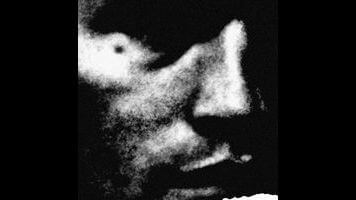30 years later, Henry remains a bone-chilling Portrait Of A Serial Killer

Fictional serial killers tend to be geniuses whose crimes practically qualify as performance art. Hannibal Lecter creates grisly tableaux inspired by classic art; “John Doe” engineers a grandiose plan illustrating the seven deadly sins; Patrick Bateman murders a guy while pontificating about Huey Lewis And The News. Even Zodiac, which is based on a real-life case and sticks pretty close to the facts, creates the impression of an incredibly crafty mind at work. In truth, most serial killers are thoughtless creatures of impulse, and no movie captures that mindset with more disturbingly matter-of-fact casualness than Henry: Portrait Of A Serial Killer, which is being re-released in theaters this week on the occasion of its 30th anniversary. (The film had its festival premiere in 1986, though it didn’t get a commercial run until 1990.) Originally given an X rating (which it refused, going out unrated instead), Henry isn’t all that gory, especially by today’s standards; Hannibal aired more explicit violence on network TV. But it’s genuinely upsetting in a way that no previous movie about a murderer had been, and that very few such movies have been since.
The title character—played, in one of the most remarkable screen debuts of all time, by Michael Rooker—is loosely based on Henry Lee Lucas, who confessed to murdering more than 300 people over a span of decades (though authorities consider the vast majority of those confessions to be false). He’s introduced via a sequence that juxtaposes his mundane activities with various corpses, presumably his victims; before long, he’s stalking a woman he spots in a mall parking lot, following her home in his beat-up Chevy Impala. When Henry starts demonstrating his hobby to his roommate, Otis (based on Lucas’ friend Ottis Toole, and played by Tom Towles), Henry shifts to depicting the killing themselves rather than just the aftermath. Meanwhile, Otis’ sister, Becky (Tracy Arnold), has just arrived in town after extricating herself from a bad marriage, and finds herself growing increasingly attracted to Henry. (In real life, Becky was Ottis’ 12-year-old niece, which—given what happens—would have been too much even for this movie.)
Part of what makes Henry so disturbing is that there really isn’t a story per se. No cop is ever seen investigating Henry’s murders, and there’s never even the slightest tension that he might be caught. The movie simply observes him as he goes about his day—a day much like yours or mine, except for the part where he randomly attacks people. Sometimes he kills out of an apparent need for release, sometimes just because the victim annoys him. Otis steals a video camera from the scene of one murder, and the pair subsequently record their crimes for posterity; a scene in which Henry and Otis slaughter an entire family in their home is made even harder to watch by virtue of being shown entirely on a TV set, with the killers enjoying their horrific antics after the fact. There’s a tiny sliver of hope that Becky’s influence may have an effect on Henry—she’s unfailingly pleasant and good-natured, oblivious to the evil surrounding her—but the movie extinguishes that hope in an unforgettably chilling way, ending on a note of flat nihilism.
Given its essentially amoral nature, Henry: Portrait Of A Serial Killer could easily have been written off as cheap, pointless exploitation—certainly, that was the reaction of distributors throughout the late ’80s. Critics, however, largely supported the film, with Roger Ebert being a particularly vocal champion. Even viewers who have trouble accepting such a relentlessly ugly worldview have to acknowledge that Henry is uncommonly well acted and directed by the standards of no-budget trash horror. Henry’s disarming amalgam of soft-spoken friendliness and ice-cold sociopathy gets under your skin because Rooker (most recently seen on The Walking Dead and in Guardians Of The Galaxy) never suggests that the former is a calculated cover for the latter—both sides coexist, which is harder to process. And director John McNaughton, who would go on to make the comparatively overheated Wild Things, understands that the camera can communicate indifference uncommonly well, and that indifference is the scariest thing of all.